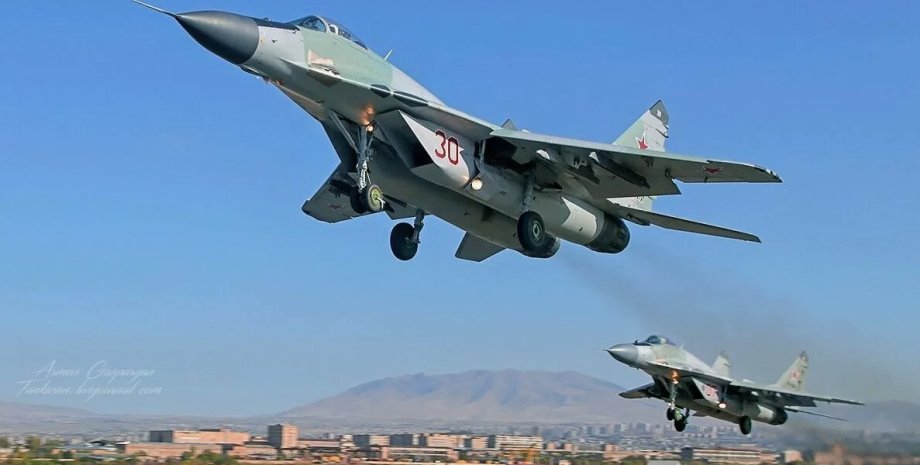
Focus has translated the article by American journalist Peter Suchu about the Soviet MiG-29 fighter, which is still involved in hostilities, despite his age. Mikoyanovsky MiG-29 (Fulcrum "by NATO Classification), designed to confront with new American fighters McDonnell Douglas F-15 Eagle and General Dynamics F-16 Fighting Falcon, was armed with Soviet Air Force 1983. The two -engine aircraft thought of Mikojan OKB as a fighter of the preference in the air.
More than 1,600 aircraft were produced, and the MiG-29 became one of the most powerful fighters of the fourth generation. Four decades, he continues to remain in service not only by Russia but also by a number of former Soviet republics. MiG-29 use both Russian and Ukrainian troops during the current conflict. Fulcrum export models sold Eastern Germany, India, Iran, Iraq, Libya, Peru, Poland, Syria, Sudan and Yugoslavia.
However, the list of MiG-29 operators has a very unexpected country-the United States. After the reunification of Germany, Luftwaffe began to be adopted by the MiG-29, which were in operation of the Air Force former East Germany. This made it possible to get acquainted with the plane closer to the US Air Force, which they would have been resisted if the Cold War had unfolded differently.
The American pilots were even able to test the MiG-29 Fulcrum in air training and quickly found that in the dogfights at low MiG-29 speeds, a maneuverability, which their aircraft could not be compared. In addition, the tests showed that at distances up to 64 km, American aircraft had an advantage over fulcrum, but at distances up to 16 km this advantage was rapid obvious. After the collapse of the Soviet Union, at the end of 1991, it seemed that the world was more close to a dangerous situation.
Almost 30,000 nuclear weapons and a huge weapons production complex were scattered throughout the four sovereign states. This led to the emergence of the Nanna -Lugar program "Joint Reduction" (CTR) aimed at guaranteeing security and dismantling weapons of mass destruction.
Thanks to this program, Ukraine, Belarus and Kazakhstan became "free from nuclear weapons", but Congress also allocated funds to the Ministry of Defense to ensure that nuclear weapons or platform, capable of carrying nuclear weapons will not fall into someone else's hands. In November 1997, the United States used CTR funds to buy 21 MiG-29 aircraft with nuclear weapons from the Republic of Moldova, which was part of the former Soviet Union.
The United States feared that Moldova could sell these Mig-29 aircraft that seek to gain nuclear potential-for example, Iran. It happened after the Moldavian authorities reported Washington that the Republic of Islamic had shown interest in the aircraft. Iran was already operating the MiG-29, but the Clinton administration feared that modernized MiG-29C options, which Moldova owned, could be used to deliver nuclear weapons.
The United States went to an agreement to purchase this aircraft and paid $ 40 million, and provided humanitarian assistance, which included non -lethal defense equipment, such as trucks. In addition, the purchase of tactical fighters of the US Air Force, the US Navy and the US Marine Corps received data on the MiG-29, as well as the ability to use these planes in training air battles.
At the end of 1997, 21 could, including 14 MiG-29C, was taken to the National Air Force Intelligence Center (Nasic) at the Wright Patterson in Ohio. It is not quite clear how the MiG-29 was used. Some of them may have been tested, but most of all, most likely were sent to scrap metal. However, at least a few aircraft can be seen at the Air Base of Nelly (Nevada), Navy Fallon (Nevada), Guudfellow Air Base, Texas and Wright Patterson (Ohio). Peter Suchyu is a journalist from Michigan.










All rights reserved IN-Ukraine.info - 2022